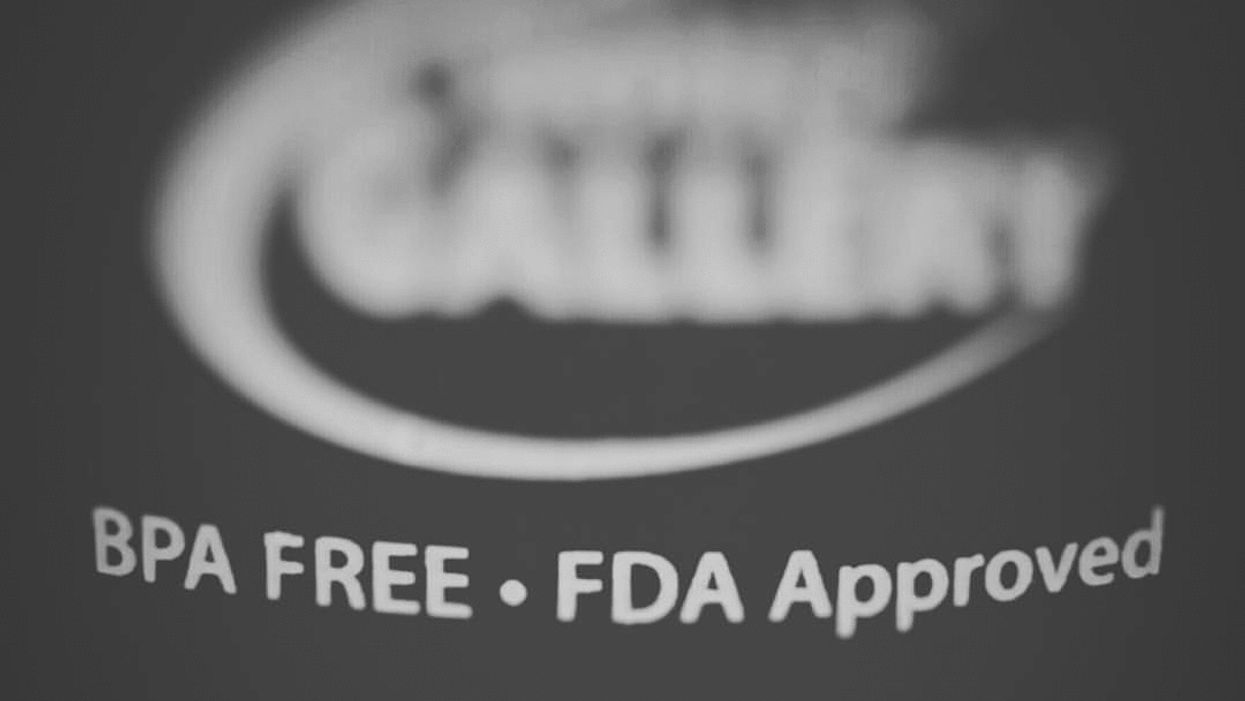Last week, the National Toxicology Program (NTP) released part of a multi-year study designed to resolve debate over the safety of BPA.
Following the release of these partial data, the U.S. Food and Drug Administration (FDA) issued a statement characterizing the results as showing "minimal effects" from exposure to BPA, leading many to conclude that BPA is safe at current levels.
We believe, however, such conclusions are being drawn prematurely and without sufficient scientific evidence to support them.
The Consortium Linking Academic and Regulatory Insights on Bisphenol A Toxicity (CLARITY-BPA) study includes two separate investigations. The first (the FDA/NTP) relied on standard toxicology testing guidelines. This portion of the study – the one that has been released—is referred to as the core study.
The second portion of the study includes analyses undertaken by a consortium of 14 scientific groups (C14) following proposals peer-reviewed by the National Institute of Environmental Health Sciences (NIEHS). This portion of the study is still underway.
Why two parts to the investigation? Because the debate over BPA's safety revolves around which methods of investigation are used and what is being measured.
The FDA has traditionally relied upon studies that use decades-old 'standardized' ("guideline") tests for effects that focus on changes in organ weight, growth parameters and tumor development. We believe such tests fail to detect many of the adverse effects shown to be caused by exposure to very small amounts of BPA, similar to those most Americans experience on a daily basis. The core study relies solely upon these standardized measures.
While we concur with the need to focus on tumor development, the other standardized end points in the core study are neither sensitive enough nor specific for effects such as endocrine disruption, which is caused by BPA.
The C14 work, instead, uses state-of-the-art analyses that are designed to reveal effects that relate directly to human health conditions and to diseases that have been increasing rapidly in recent decades. This portion of the CLARITY-BPA study has yet to be completed.
For both investigations, the FDA facility treated thousands of rats—under Good Laboratory Practice guidelines—with different doses of BPA over varying periods of time. Both groups received tissues from rats treated at the FDA facility. To avoid bias in data interpretation, the C14 investigators were told which animals received which treatment only once tests were complete.
The C14 investigators are specialists across a broad spectrum of organs and diseases and each team applied sophisticated organ, cellular and molecular analysis to provide state-of-the-art assessments of BPA effects.
Last week, the NTP released the preliminary report of the FDA/NTP's study results, i.e. half of the CLARITY-BPA findings. We find the FDA's response to this new information from experiments with rats perplexing, given that it represents only half the data, which have not yet been peer-reviewed.
We do not believe that the CLARITY-BPA results to date, including the study results just released, justify the FDA's current judgment that, according to Deputy Commissioner Stephen Ostroff, "currently authorized uses of BPA continue to be safe for consumers."
First, some work by our colleagues in CLARITY-BPA has already been published in the peer-reviewed literature. They find that the lowest dose of BPA used by the FDA—the dose chosen to model real human exposure levels—caused changes in brain structure, ovarian function and cardiac health. Higher BPA doses led to learning and memory deficits.
These results are consistent with findings from epidemiological studies of people. Additional data by these research teams will be released during the next year that document additional adverse effects of BPA at low doses.
Second, a careful assessment of the data just released reveals adverse effects with real health implications for people: the same very low doses that produced adverse effects in the academic labs, caused increased rates of mammary gland cancer and chronic prostatitis, a potential precursor to prostate cancer, as well as other adverse effects. The FDA stated only that the mammary tumors will require further studies.
It is unclear why increased mammary cancer and chronic inflammation of the prostate, at doses to which many Americans are exposed, were considered "minimal effects" of BPA.
For example, a study conducted as part of CLARITY and already published in the scientific literature by one of our colleagues found that the brains of BPA-treated rats were altered by a dose of BPA at least 100,000 times lower than the dose of BPA that changed the weight of the uterus. Changes in uterine weight is one of the standardized tests deemed important by the FDA. Notably, the FDA standardized tests don't examine brain structures.
Not all of the C14 scientists have published their results yet. More confirmed consequences of low dose exposures are certainly coming. Only time will tell which is the most sensitive measurement of BPA exposure, but it is already clear that it won't be organ weight and standard histology.
Deriving policy recommendations from unpublished data that has not yet been peer reviewed is problematic.
More than a thousand studies by independent investigators have found that BPA drives adverse effects in laboratory experiments; these results are consistent with patterns seen in people. These most recent data indicate there is no safe level of exposure to BPA; adverse effects were found at the lowest level examined by CLARITY-BPA, by both the FDA/NTP group and the C14 investigators.
From what is already known about BPA, combined with the new data that is emerging, we disagree strongly with the FDA's conclusion.
In fact, we believe that the scientific evidence supports reducing exposure to BPA dramatically—an action already taken in several other industrialized countries.
The authors are investigators in the CLARITY-BPA study.
Frederick S. vom Saal is a Curators' Distinguished Professor in the Division of Biological Sciences at University of Missouri-Columbia; Jodi Flaws is a professor and interim head in the Department of Comparative Biosciences at the University of Illinois; Ana M. Soto, is a professor in the Department of Immunology at Tufts University School of Medicine; and Gail S. Prins is a professor in the Department of Urology, College of Medicine at the University of Illinois at Chicago.
CLARITY-BPA is a collaboration between the National Toxicology Program (NTP), National Institutes of Health (NIH), the Center for Food Safety and Applied Nutrition (CFSAN) of the Food and Drug Administration (FDA), and 14 teams of scientists at some of the world's leading universities with expertise in relevant research specialties.
















